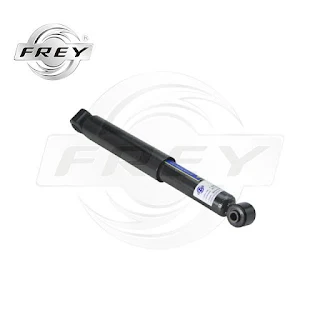In wildlife conservation, we often imagine vast landscapes, dedicated rangers, and scientists tracking animals in jungles. While true and vital, some of the most impactful efforts happen on a smaller scale—inside a quiet, climate-controlled incubator. The best incubators, once associated with poultry farms and reptile enthusiasts, have evolved into critical tools for conservation, helping researchers, rescuers, and educators protect vulnerable species. For many reptiles and birds, the challenge begins at the egg stage. In the wild, eggs face threats like predators, environmental instability, disease, and human activity. For endangered species, every egg is genetically invaluable, and losing even a few can devastate fragile populations. Using the best incubators, modern incubation technology provides what nature often cannot: a controlled, secure environment that maximizes hatching success and boosts a species’ survival chances. This article highlights the essential role of advanced incubators in conservation. We’ll explore specific scenarios, technological advancements, and the benefits that make the best incubators indispensable for protecting endangered species.
Table of contents:
The New Frontier of Incubation: From Farm to Field
The Core Technology Fueling Conservation Success
Amplifying Impact: The Ripple Effect of Efficient Incubation
Empowering the People on the Ground: Finding the Best Incubators for Every Role
The New Frontier of Incubation: From Farm to Field
The modern conservationist’s toolkit is diverse, and a portable, reliable incubator is fast becoming a non-negotiable component. Its application spans multiple environments, each with unique demands.
Powering Wildlife Rescue Sanctuaries
Imagine a sea turtle nest on a tourist-heavy beach, threatened by coastal development, or a clutch of rare lizard eggs recovered from an illegal trafficking bust. Wildlife rescue centers are the first responders in these situations. Their goal is to provide immediate, stable care. A dedicated incubator allows them to replicate the precise temperature and humidity conditions the eggs would have experienced in an ideal natural nest. This immediate stabilization is crucial for preventing embryonic death and ensuring the rescued eggs have the best possible chance of hatching into healthy offspring for eventual release.
The Precision Engine for Scientific Research
For ecologists and biologists, an incubator is a miniature laboratory. It is essential for studying the fascinating phenomenon of Temperature-Dependent Sex Determination (TSD), where the incubation temperature determines the gender of hatchlings in many turtle, crocodile, and lizard species. By precisely controlling the temperature, researchers can study population dynamics, predict how climate change might skew sex ratios in the wild, and even strategically produce more females to accelerate population recovery in captive breeding programs. It is a tool for understanding life at its most fundamental level.
A Living Classroom for Environmental Education
How do you teach a child about the fragility of an ecosystem? You show them. Environmental education centers and nature bases use incubators as powerful visual aids. Witnessing the development and hatching of a native turtle or quail species creates a tangible, emotional connection to wildlife that a textbook cannot replicate. It transforms abstract concepts like conservation and life cycles into a memorable, firsthand experience, fostering a new generation of environmentally conscious citizens.
Essential Gear for Remote Fieldwork
Perhaps the most significant leap forward is the incubator's utility in the field. Conservation often happens far from reliable infrastructure. Researchers on remote islands or deep in rainforests need equipment that can withstand the rigors of fieldwork. Modern portable incubators, especially those with dual power options for both standard outlets and vehicle batteries, are game-changers. They allow teams to set up temporary hatching stations on-site, reducing the stress and risk associated with transporting delicate eggs over long distances.
The Core Technology Fueling Conservation Success
The effectiveness of an incubator in these demanding scenarios hinges on a set of key technological features. When conservation groups are searching for new incubators for sale, they are not just buying a heated box; they are investing in precision, reliability, and versatility.
Precision Temperature Control for Diverse Species
The single most critical function is the ability to maintain a stable temperature. However, the best incubators offer more than just heat. They provide a wide temperature range with both heating and cooling functions. A range from 5°C to 60°C (41°F to 140°F) is incredibly versatile. It can create the cool, stable conditions needed for the diapause (a period of suspended development) of some reptile eggs, as well as the consistent warmth required by tropical species. This adaptability means a single unit can support a wide variety of conservation projects.
Unlocking True Portability with Dual Power Systems
A conservationist’s work is not confined to a lab. The ability to operate an incubator from a vehicle’s 12V DC outlet is transformative. It means a team can retrieve a threatened clutch of eggs from a remote location and begin ideal incubation immediately in the back of their truck. This continuity of care is vital. The dual AC/DC power system ensures the incubator is just as effective in a field tent powered by a generator as it is back at the research base, making it a truly mobile solution.
Optimizing Humidity and Hygiene
Temperature is only half the battle; humidity is equally important for preventing egg desiccation or mold growth. Simple yet effective features, like a dedicated water tray at the bottom of the unit, allow users to maintain ambient humidity levels easily. Furthermore, removable shelves and trays are not just for organization. They make cleaning and sterilization between clutches simple and thorough, preventing the spread of bacteria or fungus that could jeopardize an entire clutch of priceless eggs.
Simplified Operation for Critical Missions
In high-stakes conservation work, equipment must be intuitive and reliable. A clear, digital LED display that shows the real-time internal temperature and allows for easy set-point adjustments is essential. Field researchers and volunteers may not have the time or resources for complex calibrations. A user-friendly interface minimizes the chance of human error, ensuring the focus remains on the mission, not on deciphering a complicated manual.
Amplifying Impact: The Ripple Effect of Efficient Incubation
The use of a high-quality incubator creates positive outcomes that extend far beyond the successful hatching of a few eggs. It contributes to a broader, more sustainable conservation strategy.
A Lifeline for At-Risk Populations
For species with critically low numbers, every individual matters. By dramatically increasing hatch rates compared to the wild, incubators directly contribute to population growth. This practice, known as head-starting, allows hatchlings to grow to a less vulnerable size in a protected environment before being released. This gives them a significant advantage and has proven to be a successful strategy for bolstering the populations of many turtle and reptile species worldwide.
Conserving Resources, One Egg at a Time
Nature is abundant but also wasteful. A significant percentage of eggs laid in the wild are lost. By securing these eggs and ensuring their viability, incubators act as a resource conservation tool. It is a more efficient and targeted use of the reproductive output of an endangered species, ensuring that the energy the parent animal invested is not lost to a predator or a sudden cold snap.
The Sustainable Choice for Modern Conservation
Compared to the alternative of building and running large, climate-controlled incubation rooms or greenhouses, a compact incubator is an incredibly energy-efficient solution. Its low power draw, especially when running on a DC system, aligns perfectly with the ethos of environmentalism. It minimizes the carbon footprint of the conservation project itself, ensuring the methods used to save nature are not harming it in the process. Its lightweight and durable design also means it can be easily transported and used for many years across multiple projects, reducing waste and making it a sustainable long-term investment.
Empowering the People on the Ground: Finding the Best Incubators for Every Role
Different users have different priorities, and the market for the best incubators must cater to this diversity.
For the Research Scientist: Data and Dependability
The scientist needs unwavering accuracy. They look for incubators that hold temperature with minimal fluctuation, providing the stable environment needed for credible experimental results. The ability to replicate conditions precisely is paramount for their work on TSD and developmental biology.
For the Field Volunteer: Durability and Simplicity
The volunteer needs a workhorse. Their incubator must be portable, easy to set up, simple to operate, and robust enough to handle being moved around. The dual power feature is often their most valued asset, allowing them to work effectively in off-grid locations.
For the Educator: Safety and Engagement
The educator needs a tool that is safe for public display and easy for observers to understand. A clear viewing window, quiet operation, and a straightforward digital display make the incubator an engaging centerpiece for exhibits without being disruptive or hazardous.
The narrative of environmental protection is evolving. Alongside large-scale habitat preservation, there is a growing recognition of the power of targeted, technology-driven interventions. The modern incubator embodies this shift. It is a testament to how thoughtful engineering can provide accessible, affordable, and highly effective solutions to complex ecological problems. It democratizes conservation, putting powerful tools into the hands of a wider range of people dedicated to protecting our planet’s biodiversity.When organizations and individuals look for incubators for sale that can meet these diverse and demanding needs, they are looking for more than a product. They are seeking a reliable partner in their mission. They require a device that blends laboratory-grade precision with field-ready toughness. As this need grows, brands that understand the unique demands of the conservation community stand out. With its wide temperature range for heating and cooling, essential dual AC/DC power system, and user-friendly design, a versatile scientific incubator from a brand like HONYTA is increasingly becoming the go-to choice for those on the front lines, quietly helping to hatch a better future for wildlife, one egg at a time.





















